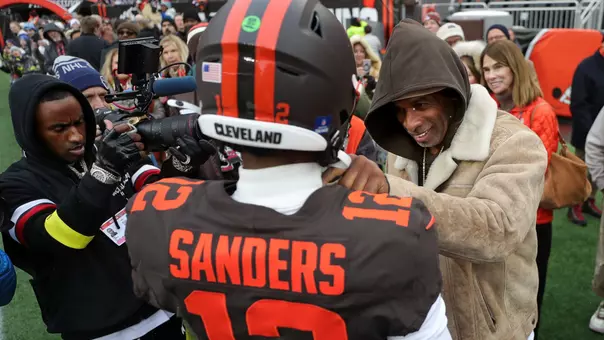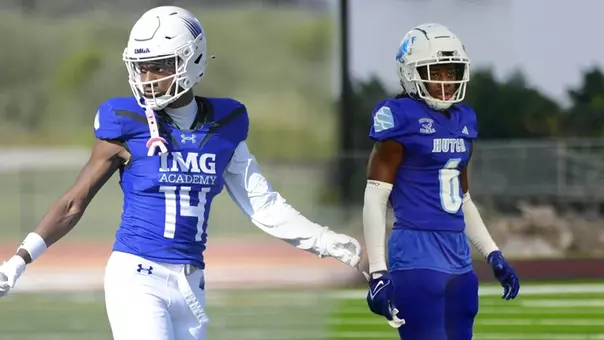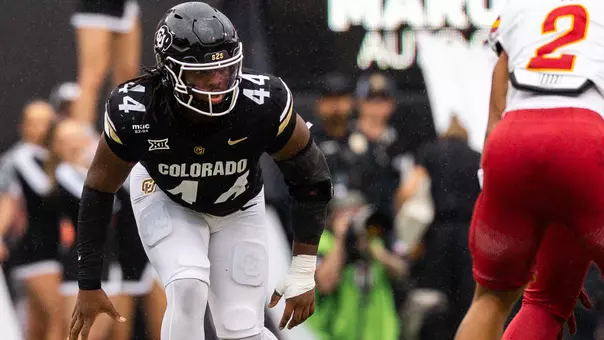Colorado University Athletics

Woelk: 10 Takeaways From Buffs Vs. USC
October 14, 2018 | Football, Neill Woelk
BOULDER — When Mike MacIntyre's Colorado Buffaloes get back to work Monday morning, they will begin the process of addressing the issues that hurt them in Saturday's 31-20 loss to Southern California.
It won't be a short list. The Buffs struggled on both sides of the ball at key junctures, and those issues were magnified by the fact that they were facing the most talented team they have seen in their six games thus far. The Trojans were more than capable of taking advantage of every miscue the Buffs committed, and they did so with a vengeance.
That kind of recipe — not playing well against a good team — will invariably produce such an outcome.
Next up? A Saturday matchup in Seattle (1:30 p.m., Fox) with the the No. 15 Washington Huskies, a team guaranteed to be in a bad mood after an overtime loss to Oregon. It will be CU's first game against a ranked opponent this year and the Buffs' first time as a heavy underdog.
What kind of things will Colorado's coaches and players be working on this week as they prepare for their second straight week in the underdog role?
Our weekly 10 Takeaways:
1. Improving first down yardage. This might seem to be nit-picky, but it's actually where Colorado's troubles started, and one big reason the game snowballed into a nightmarish evening.
Heading into the game, the Buffs had been averaging a robust 6.54 yards on every first down snap. That means that on the average second down in their first five games, the Buffs were looking at a second-and-4 — the kind of situation that makes offensive coordinators giddy because of the possibilities it presents. It opens up the playbook and puts defenses on their heels.
But Saturday night at the Coliseum, the Buffs averaged just 1.5 yards on first down. That's a problem that is magnified exponentially because it feeds directly into the defense's plan — and puts them into attack mode.
The Trojans were very good at that. By the end of the night, CU's average third-down situation was third-and-9. That's an offensive coordinator's nightmare, and left Colorado's offense in a hole all night.
One more indicator of how important those first down plays are? Look at third-down conversion rates. When faced with third-and-5 or less, the Buffs were 5-for-8 against the Trojans. But on third-and-6 or more, they were just 2-for-18.
That's why the Buffs need to improve those first-down numbers, which brings us to …
2. Continue to tweak the offense. In the first five games, Colorado's offense more often than not seemed to be a step ahead of defenses. Each week, the Buffs presented a new look with good results.
But Saturday night, a defense that had the luxury of two weeks to prepare for CU's multiple looks turned the tables — they gave the Buffs some new looks that didn't as much include new personnel as they did simply different schemes. The result wasn't pretty.
In the words of CU quarterback Steven Montez, "They knew what we were going to do. They had us figured out."
That doesn't mean the Buffs can't — or won't — continue to evolve on offense. Co-coordinators Darrin Chiaverini and Klayton Adams have been very creative thus far; there's no reason to think they won't continue that trend. But, it may prove to be a slightly tougher task this week if wide receiver Laviska Shenault Jr. is still hobbled by a foot injury. Which brings us to …
3. The Buffs aren't a one-man show. Yes, the Trojans kept Shenault in check for most of the night and it had an effect. Every time he touched the ball — other than his 49-yard touchdown run — there were at least two USC players in the immediate neighborhood, and it was not a nice neighborhood.
But when Shenault left the game in the second half, the Buffs actually moved the ball more consistently than they had all night. They worked K.D. Nixon and Tony Brown into the game, and Jaylon Jackson had a nice debut at wideout with a couple of catches.
Yes, it would be unwise to read too much into that late-game effort, as the Trojans were clearly in control by that point and had dropped into "prevent" mode. There is no doubt the Buffs are a better team when they can utilize one of the nation's best receivers.
But, as Montez rather testily pointed out in his postgame press conference, "We have other players who can make plays."
4. Loading up to stop the run can come with a price. Defensively, the Buffs went into the game with the priority of stopping the run, and they were successful. The Trojans finished with a mere 62 yards on the ground on 27 carries, a 2.3 average. It was, overall, a solid effort from Colorado's front seven.
But that game plan also meant CU left its defensive backs — especially its corners — on occasional one-on-one "islands," and the Trojans were able to take advantage just enough times to make a difference.
While Colorado gave up 272 yards passing, 159 of those yards — more than 58 percent — came on just four throws. Two were long touchdown passes and two more set up scores. (To be fair to Colorado's DBs, one those long passes was a "chuck it up and hope our guy catches it and their guy slips" attempt by the Trojans — which is exactly what happened.)
It's also worth remembering that Colorado won the turnover battle with a pair of first-quarter interceptions, including the first by a defensive back (a pick by safety Evan Worthington). If CU's offense had been able to capitalize on even one of those scores, it would have been a different game.
But Saturday was the first real test for CU's secondary under those steady one-on-one circumstances. It is reasonable to assume they will improve. It is a guarantee there will be more such tests in the future.
5. Colorado defensive line has steadily improved. Kwahn Drake's bunch up front had a stellar evening, as evidenced by the USC rushing stats we mentioned earlier. CU continues to get solid play from the rotation of Javier Edwards, Mustafa Johnson (who added another sack to his season total), Israel Antwine, Chris Mulumba, Lyle Tuiloma, Jase Franke and Terrance Lang.
But after the game, MacIntyre noted that Franke likely suffered a torn ACL, which would prematurely end the senior's career. It's a tough break for CU's defense, but a much bigger blow to Franke, who was coming into his own this year.
6. Colorado's offensive line will continue to be tested. Once again — we knew this season would be a work in progress for a young O-line. After two solid efforts against UCLA and Arizona State, the Buffs had a tough night up front against a big, talented and veteran USC front seven (six upperclassmen).
The Buffs know the road won't get easier in the trenches. Washington has an outstanding defensive front. But CU's young starters continue to improve and the Buffs are trying to get more and more snaps for some of the other young players in the rotation. It's not going to morph into a perfect group overnight, but even Friday, there were series when the line helped produce some sustained drives.
The Buffs need to improve that consistency so they can be a factor when CU hits the home stretch of the Pac-12 season.
7. Quarterback Steven Montez continues to be a high-level Division I player. Montez endured a difficult evening in the pocket, taking four sacks and having to throw away a handful of passes that weren't meant to be caught by anyone on the field.
But he greatly limited his mistakes and found open receivers when he had the opportunity. His one interception was a ball that bounced off a receiver's hands; otherwise, the Trojans didn't get any extra opportunities.
Montez is still eighth in the nation in completion percentage (.705), 24th in passing yards per game (265) and is averaging nearly 8 yards per pass attempt. He also once again proved to be a threat with his legs (43 yards rushing and a touchdown when you subtract sack yardage), and he has become a reliable, consistent playmaker. His leadership is also showing up more every week.
He will be a big factor for this team in the last half of the season.
8. The Pac-12 is crazy. Already this year, Washington, Stanford and now Oregon have been deemed the best teams in the conference. Meanwhile, a team that started out hot by winning its first three and getting some top 25 votes — Cal — has lost three in a row and was throttled by previously winless UCLA; and Utah has caught fire and put together back-to-back dominant wins over Stanford and Arizona. It has all the makings of a very interesting last half of the season as quality bowl bids and division titles begin to come into play.
9. Offense needs to crank it up in the first half. In all three Pac-12 games plus Nebraska, the Buffs have trailed at some point in the first half and again in the third quarter. Three of those times they've managed to erase the second-half deficit and come away with a win, but Saturday was too big of a hill to climb.
Again, it goes back to opportunities that got away — in particular the two first-quarter interceptions. The Buffs need to take full advantage of those situations. If they can get their offense rolling early, they can be in any game they play.
10. 5-1 is a heck of a first half of the season. If injected with a little truth serum, there aren't many Buffs fans who wouldn't have taken a 5-1 start six months ago — especially if it included wins over Colorado State and Nebraska.
While Saturday's loss was no doubt disappointing, there is still an air of resiliency around this team. They know there are still all kinds of opportunities ahead, and they don't seem to be a group that will allow one sub-par performance to send them into a tailspin.
No doubt, the competition goes up another notch next Saturday. But while CU fans are taking the USC loss hard, CU players are taking it as something to learn from and use over the next six games. They have taken their deep breath and are ready to move on.
That's not a bad approach.
Contact: Neill.Woelk@Colorado.edu


















